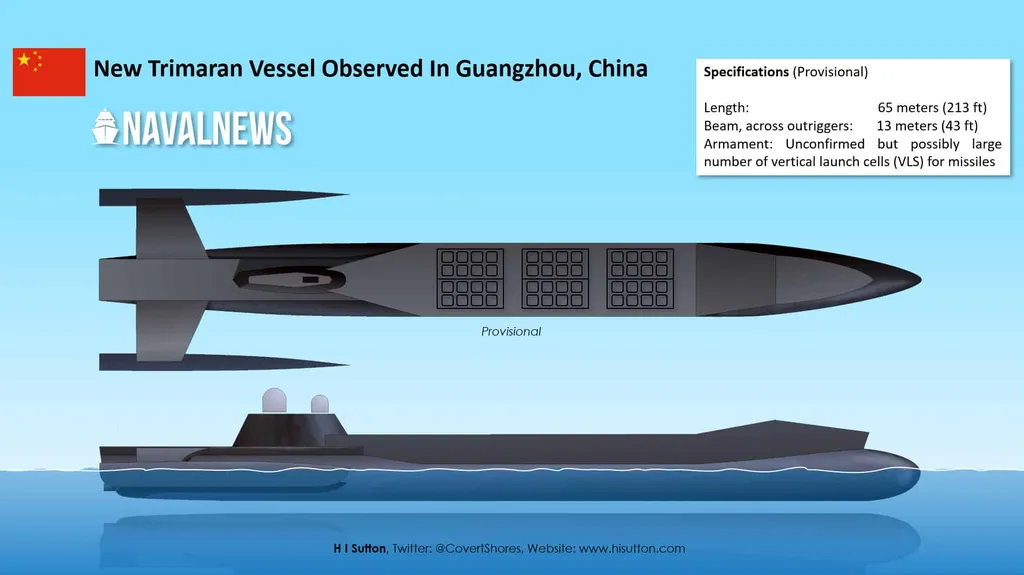China’s naval ambitions are taking a stealthy turn, with the emergence of a mysterious, potentially unmanned combat vessel under construction at the Huangpu shipyard in Guangzhou. Satellite imagery reviewed by defence analysts and reported by Naval News reveals a trimaran-style, semi-submersible missile carrier, a design that suggests a radical shift in China’s naval strategy.
The vessel, approximately 65 metres in length, stands out due to its unconventional concealment under tarpaulins—a rare practice at a shipyard typically known for producing frigates and corvettes. This secrecy has fuelled speculation that the project involves cutting-edge, possibly autonomous military technology.
According to Naval News, the ship’s slender hull and submarine-like contours, along with a box-shaped forward section, hint at high-speed surface operations and minimal crew requirements. The small, narrow superstructure further reinforces the theory that this vessel may operate autonomously or with a skeleton crew. The dark grey or black colouration, resembling submarine coatings, and the low-profile, rounded lower hull suggest that stealth and reduced radar visibility were key priorities in its design.
Analysts believe the vessel’s dimensions could accommodate a vertical launch system (VLS) beneath the forward deck, capable of housing long-range cruise missiles. If confirmed, this would position the platform as a “floating magazine,” supplementing the missile capacity of larger warships like destroyers or cruisers. The absence of a tall superstructure for onboard radar or targeting systems implies that the vessel would rely on external guidance from other ships, aircraft, or satellites.
The development of such a vessel aligns with China’s naval strategy, which has emphasised speed, saturation firepower, and distributed operations across the Pacific. A semi-submersible missile carrier would enhance China’s ability to launch large-scale precision strikes while remaining difficult to detect or target. This would pose a significant challenge to U.S. and allied navies, forcing them to adapt their surveillance, targeting, and defence networks to counter this unconventional naval threat.
Rumours of such a project have circulated since 2017, but the new satellite imagery appears to validate those early claims. If this vessel is indeed a semi-submersible arsenal ship, it would mark a bold step forward in China’s naval capabilities, blending stealth, autonomy, and heavy missile capacity into a single platform. The implications for regional and global maritime security are profound, as this development could reshape the dynamics of naval warfare in the Pacific.

